It would be dishonest to imply that every creative initiative presented by Jack Kirby was a success. But even a cursory scratch beneath the surface reveals a vast difference in the robust nature of Kirby’s creative vision when juxtaposed with the ideas Lee concocted without Kirby or Steve Ditko. Kirby’s characters had real depth and complicated, yet relatable motivations. Never satisfied with repetitive story-telling and one-dimensional personalities, Kirby can rightfully stand side by side with other creative world builders like Tolkien, Rowling, Herbert, Pullman and Le Guin. His characters, Marvel and beyond, have become fixtures in the popular consciousness. His stories have a profound richness that secures them within the embraced mythology of generations. Jack Kirby was an endlessly curious person with a lifelong interest in science fiction, religion, and mythology, all of which helped fuel his already super-charged imagination as he went about crafting new characters with rich backstories.
There exists a thoughtfulness, even a tenderness, in Kirby’s approach to characterization. Even Marvel’s biggest villain, Dr. Doom, is more of a tragic figure rather than a one-dimensional bad guy. As Kirby said in a 1970 interview:
Dr. Doom is paranoid. He thinks he’s ugly and he wants the whole world to be like him. Dr. Doom is the fox who had his tail cut off, and he’s trying to talk the whole world into having their tails cut off so when everyone has his tail cut off, he becomes the most handsome fox. That’s ridiculous, because paranoids are insane people who never get their way. Hitler tried it, you know (Morrow, 2019).
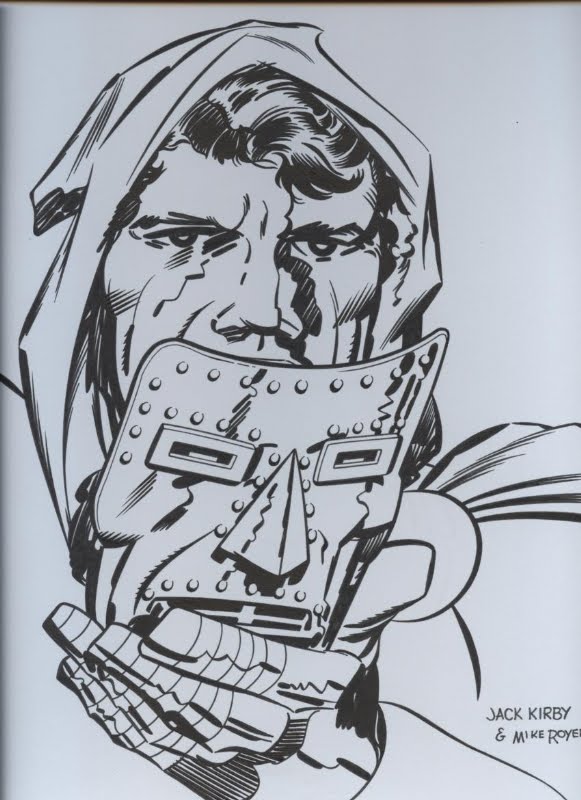
Speaking of multi-dimensional antagonists, when Kirby conceptualized Ego the Living Planet (who observers believe may have been Kirby’s commentary on his boss Stan Lee’s enormous ego) he was not content with “a planet that is alive and intelligent.” He was concerned with:
… how do you relate to it? Why is it alive? So I felt somewhere out in the universe, the universe… becomes denser and turns liquid–and that in this liquid, there was a giant multiple virus, and if this multiple virus remained isolated for millions and millions of years, it would begin to think. It would begin to evolve by itself… By the time we reached it, it might be quite superior to us–and that was Ego. That was acceptable because I was answering questions that someone might ask about it. It’s a concept. I feel somewhere–in fact, it almost makes sense–that the universe gets denser and the atoms grow more compact and possibly nothingness becomes something and that something gets bigger… and it might resolve itself into some kind of liquid atoms. Why not? (Morrow, 2019).
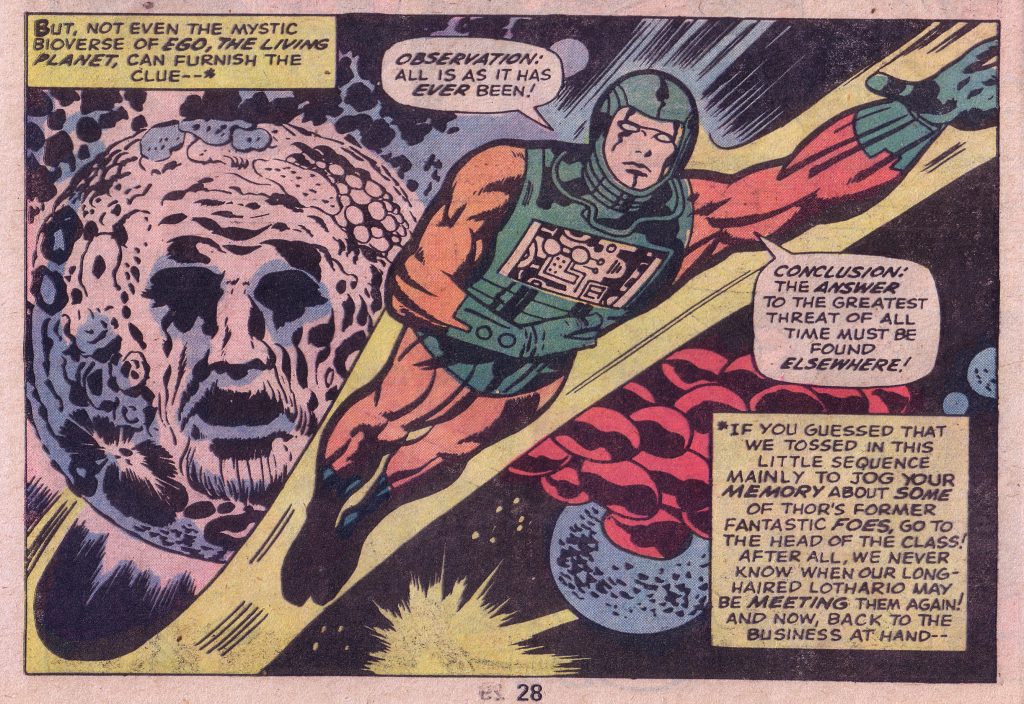
Reading Kirby’s thoughts related to DC’s desire to give a stale Superman a shot in the arm are almost heartbreaking:
Superman, see, he’s an alien in a world of inferiors… Everybody’s intimidated by him, lots of resentment. In my neighborhood, the toughest guy on the block had a target on his back. Everybody wanted to make their reputation by taking him down. That’s Superman. The finest minds are trying to take him down. And with the way technology’s going, they’re gonna come up with something sooner or later. First thing you gotta do is get rid of Kryptonite. It’s old. It’s boring. You gotta come up with characters that are tougher than Superman, stronger, meaner. My New Gods are a match for Superman. Darkseid could cut Superman in half. Superman’s on the defensive now, and he doesn’t have to hold back, either. And among the gods, Superman finds a place where he might belong. A new home, maybe. People he can relate to. People who know what it’s like to fly with the eagles. But paradise is denied for Superman as long as Earth is threatened by Darkseid’s super war, Superman has to forego his own happiness and stay where he’s needed… (Scioli, 2020).
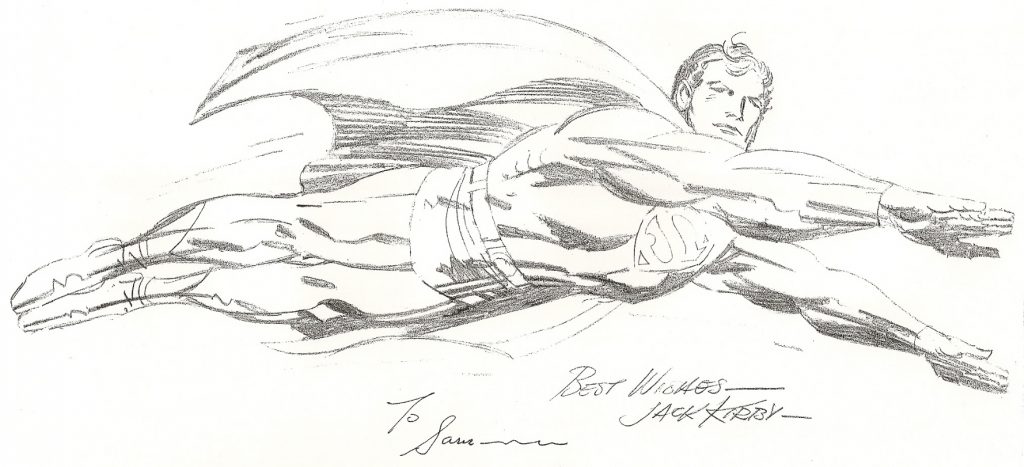
Hardly the Goodman/Lee approach to content creation.
The concept behind characters like Galactus & Silver Surfer seemed just as important to Kirby as their visual designs. His clear disappointment at script changes that altered his concept for these characters would be unusual had he not been the force responsible for their creation (Morrow, 2019).
…I was looking for a new type of super-villain… So I created Galactus. And, of course, Galactus was an omnipresent thing… he was a variation of God… Because the devil isn’t supposed to be omnipotent. He’s got a weak spot somewhere, see, and we’re supposed to be able to outwit him in some way. Well, you can’t outwit God. And I felt that way about Galactus… I thought, well, as long as I’m going to do that sort of thing, I’ll include the fallen angel. And I got the Silver Surfer out of the fallen angel of Galactus … So I created the Silver Surfer, and I gave him the role of fallen angel, and Galactus banished him to Earth, which God did to the devil … that was the original role that I intended for him, although he isn’t an evil character … Galactus eats entire worlds, he eats entire planets. It’s an omnipotent type of thing, which, you know, the more ordinary super-villain can’t engage in. (Morrow, 2019).
As many fans know, when Stan Lee first saw Silver Surfer in Kirby’s penciled pages for Fantastic Four #48, he derided him as a “naked nut” and exclaimed, by his own account: “Jack, you’ve got to be kidding!” Of course, Silver Surfer went on to become one of Marvel’s most beloved characters, which did not go unnoticed by Lee, who quickly did an about-face. But then, despite Kirby’s clear attachment to the character, Lee announced a contest for readers that was no more than a solicitation for Silver Surfer origin story ideas, as if Kirby did not already have that mapped out. To add insult to injury, Lee tapped newcomer, John Buscema, to draw a new Silver Surfer solo comic, that he and Lee would write. Later on, Kirby was quoted as saying: “Silver Surfer was taken out of my hands. I originated it because I had a reason for the Silver Surfer. Nobody else had a reason for him; I knew the Silver Surfer. Nobody else did” (Morrow, 2019). Jack was a tough guy and not particularly emotive in his language when being interviewed, but the hurt here is palpable.
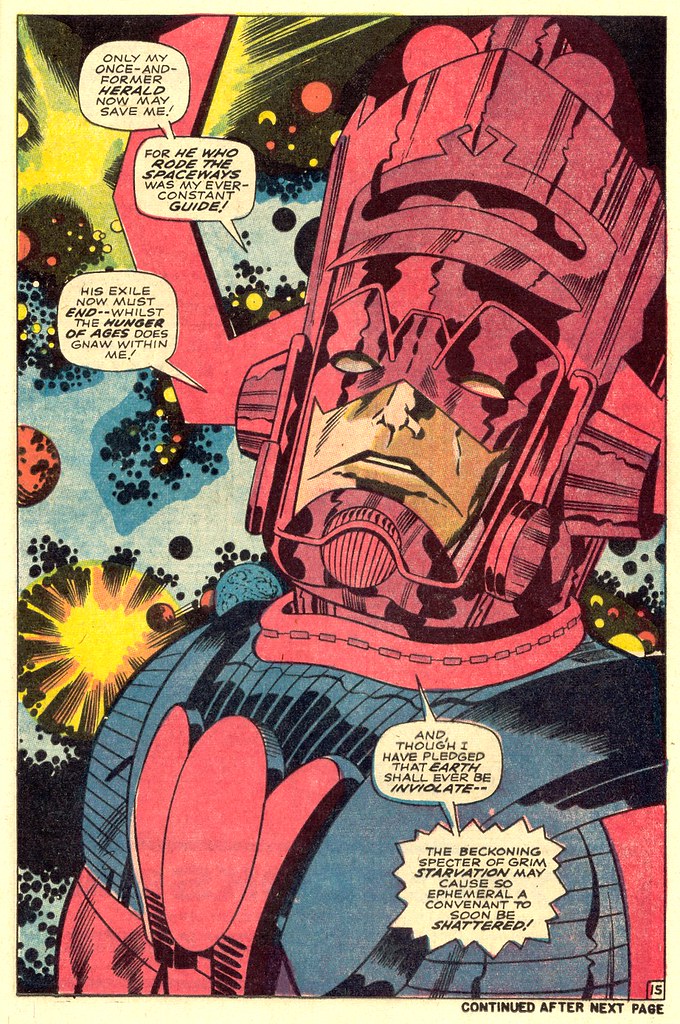
As a devastating counterpoint to Stan’s gimmicky approach to creating comic book characters, Kirby’s epic New Gods and Fourth World storylines are dense with unique and memorable concepts and characters, occupying entire Kirby-imagined worlds (Scioli, 2020). This was a story, told across multiple comic titles, of total war, led by one of DC Comics most memorable villains, Darkseid.
… was there ever a villain in comic-book history like Darkseid? Not even Dr. Doom, … was capable of uttering some of the worldly-wise, iconoclastic, amoral lines that passed through Darkseid’s cracked granite lips, lines that were not expressed in hysterical rants or pompous speeches, but rather with lofty coolness, commanding knowledge, and a laser-guided relevancy, so that even his most disturbing comments, so contrary to the notions usually affirmed in comic books, have the dissonant ring of truth (Well, 1995).
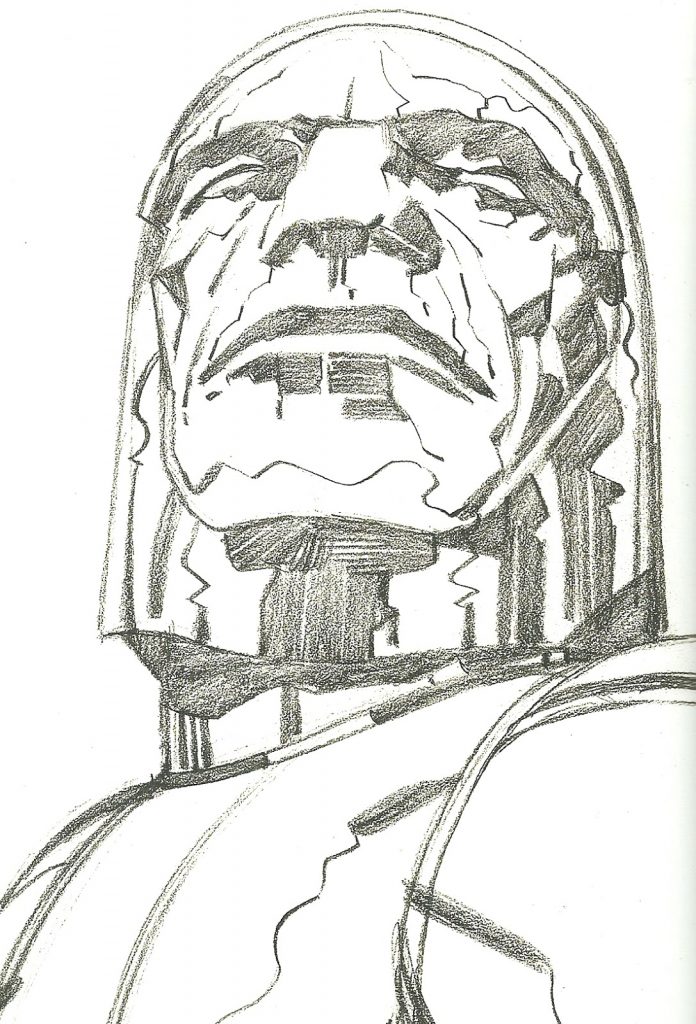
Even the heroes break from the now-familiar formulas, standing equal to the relentless conquest of total war and exhibiting a battle-hardened edge, perhaps not achievable but by an author who’d witnessed the brutality of war first-hand. Fascinating concepts and technology like Mother Boxes, anti-life equations, and Boom Tubes add a richness to this world not often observed in the comics of other, less imaginative creators.
Jack Kirby was not shy about confronting ideals he viewed as faulty and, true to fashion, waged his counter-attacks in creative ways. Disgruntled by the popularity of Ayn Rand’s Objectivist philosophy, Kirby crafted a story that cleverly presented the dangers of that worldview. In the tale, well-intentioned scientists set out to create a superior human that operated solely on reason and saw the world in black-and-white. The experiment backfires when this being attacks its makers due to their inferior humanity, governed as it is by emotion and imperfect logic. Kirby was intent on conveying the message that “pure reason, removed from forgiveness and accommodation for imperfection, can be destructive” (Riesman, 2021). Stan sabotaged the lesson by writing in a well-worn story of bad-guy mad scientists getting their comeuppance for trying to take over the world (Morrow, 2019). This episode encapsulates the clash between Kirby’s big-picture motivated creativity and Lee’s simplistic and formulaic approach, and exacerbated the break in their working relationship.